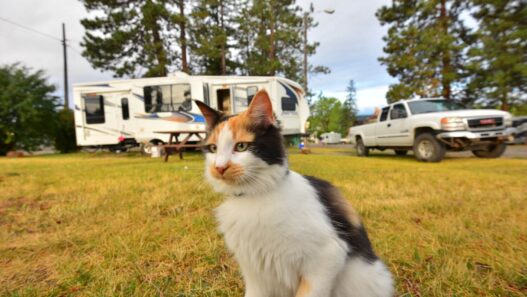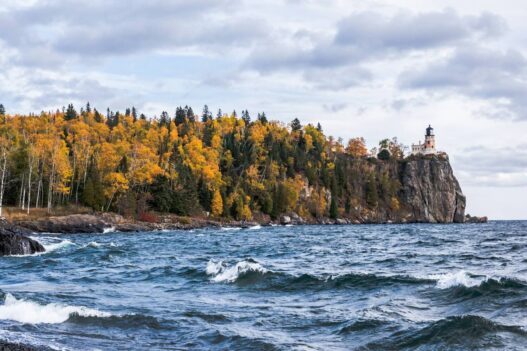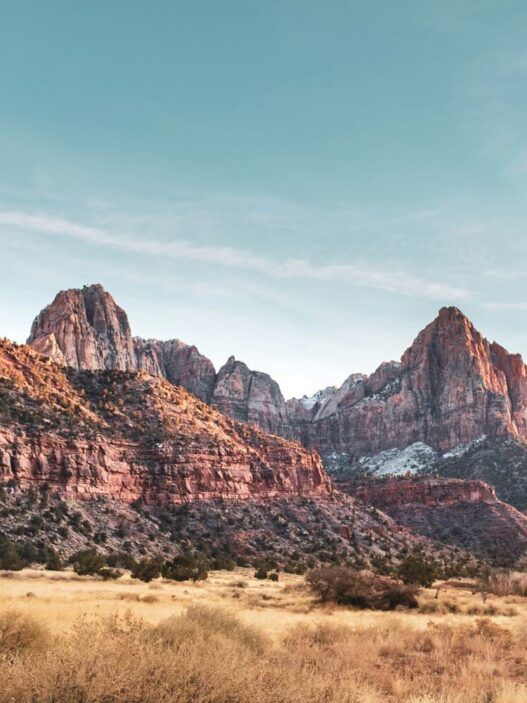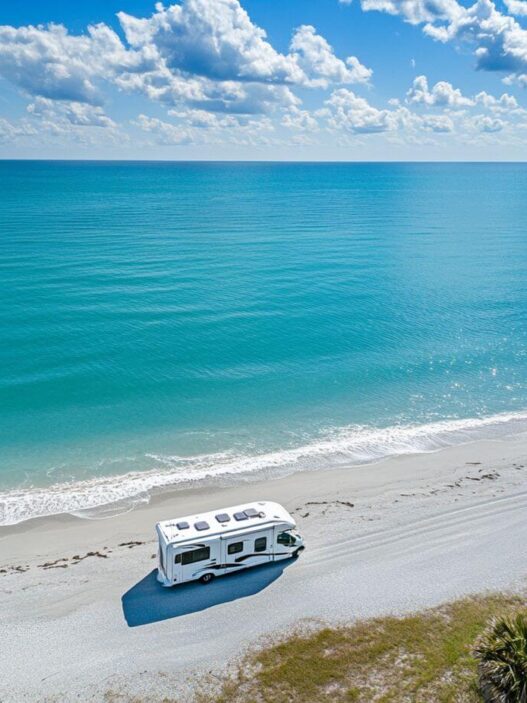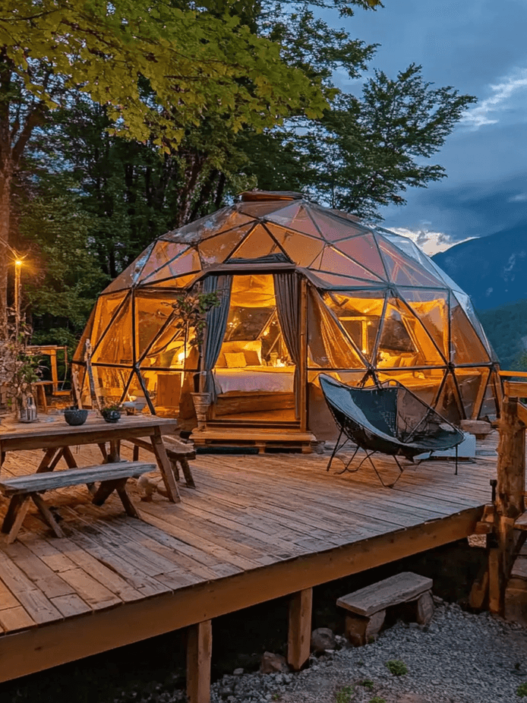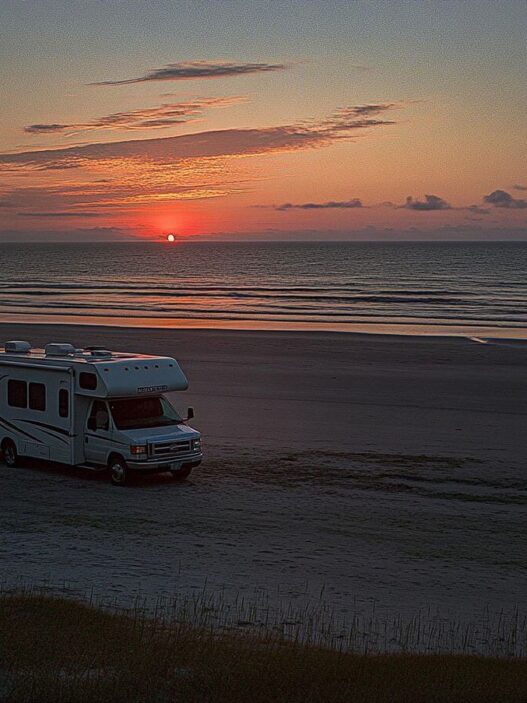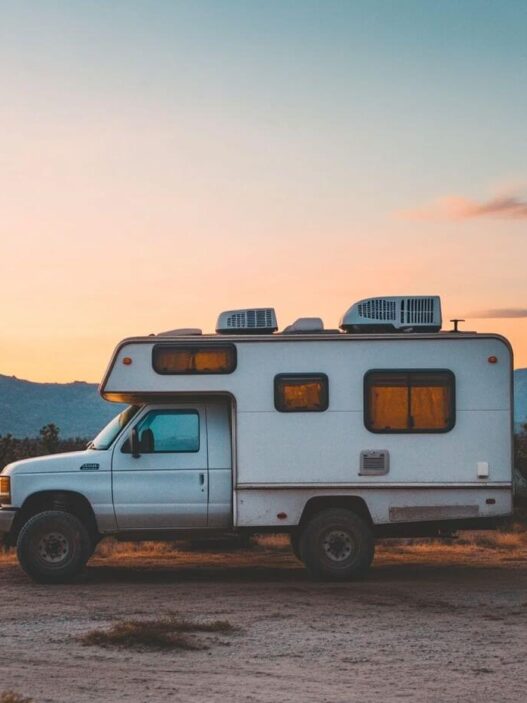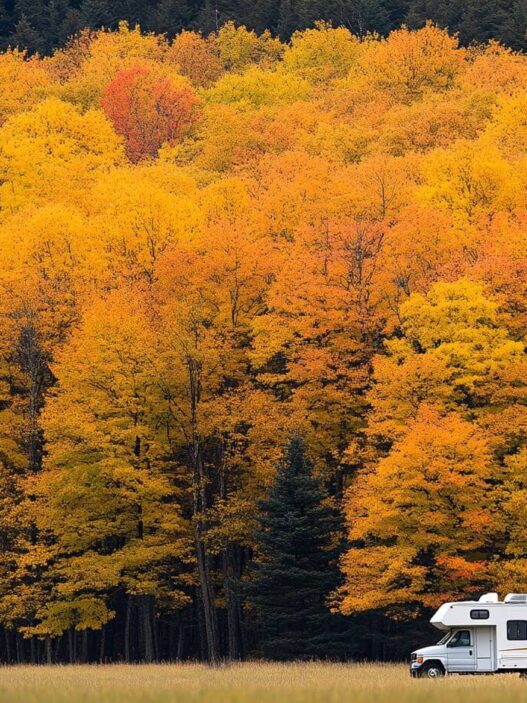April just might be camping’s golden child. The winter freeze is finally backing off, the summer tourist hordes haven’t invaded yet, and everything in nature seems to be waking up and showing off. It’s that sweet spot when you can actually enjoy the outdoors without freezing or melting.
From coast to coast, these camping spots deliver the goods this April, whether you’re into desert vibes, mountain adventures, beach camping, or hiding out in the forest. Grab your gear and let’s go!
1. Joshua Tree National Park, California
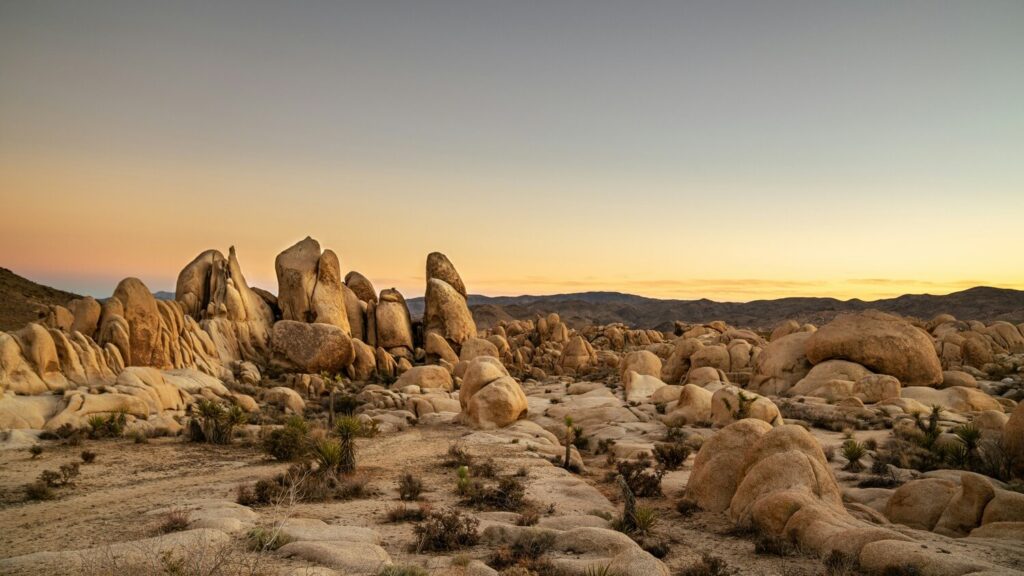
Joshua Tree looks like something straight out of a sci-fi movie with its funky trees and huge rock piles. April is pretty much perfect weather-wise in this desert spot, with days hitting 70-85°F and nights cooling down to the 50s.
You’ll find nine different campgrounds scattered throughout the park. Black Rock and Cottonwood have the basics covered with water and flush toilets, while spots like Jumbo Rocks and Belle keep it simple and more back-to-nature. Most campsites work on a first-come, first-served basis, except Black Rock, Cottonwood, and Indian Cove, which need reservations ahead of time.
What makes April special in Joshua Tree is the possibility of catching desert wildflowers in bloom, especially after winter rains. The clear desert skies also provide exceptional stargazing opportunities, with the Milky Way stretching across the night sky in all its glory. Photographers will appreciate the golden hour lighting on the park’s distinctive rock formations.
For daytime adventures, try hiking to Barker Dam, climbing the granite formations (with proper equipment and experience), or taking the short trail to Keys View for a panoramic vista of the Coachella Valley.
2. Zion National Park, Utah
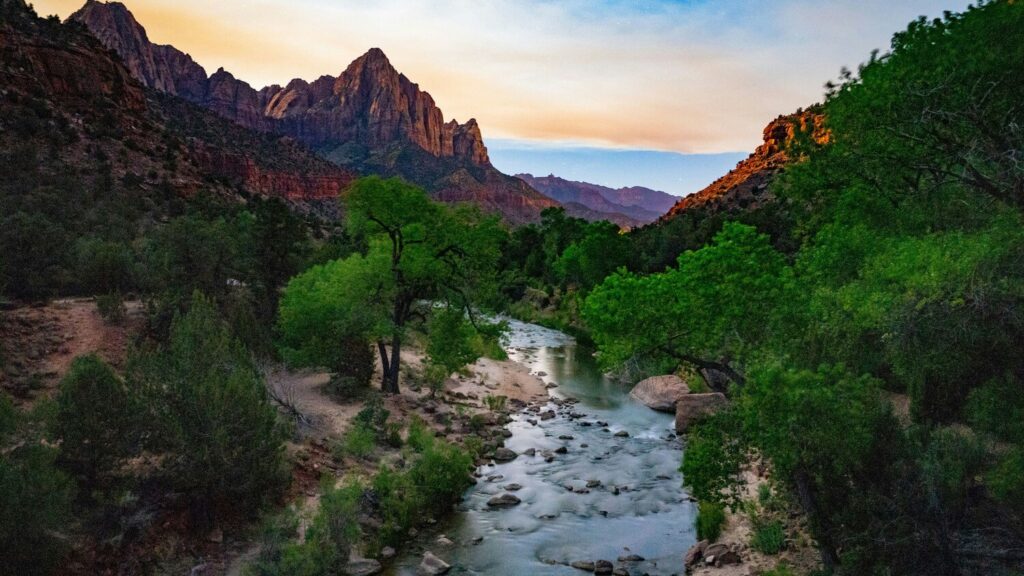
April is when Zion really shines. The weather’s just right for hiking, waterfalls are flowing nicely, and you won’t battle the summer crowds. Those massive red cliffs look even more impressive against all the fresh green popping up along the Virgin River.
Temps hit a sweet spot for outdoor fun, usually between 45-75°F during the day and dropping to the 30s and 40s at night. Just throw some extra layers in your pack and you’re good to go.
Camping at Watchman or South Campground puts you right by the park shuttle stops, which start running in April. Don’t wait until the last minute to book though! Even in spring, these spots get snatched up fast.
April camping in Zion means access to the park’s most iconic trails without the sweltering summer heat. The Narrows might still be off-limits due to high water levels from snowmelt, but Angels Landing, Emerald Pools, and Canyon Overlook trails are typically accessible and breathtaking with spring vegetation.
Wildlife viewing opportunities improve as well, with mule deer, bighorn sheep, and various bird species becoming more active in the moderate temperatures.
3. Shenandoah National Park, Virginia
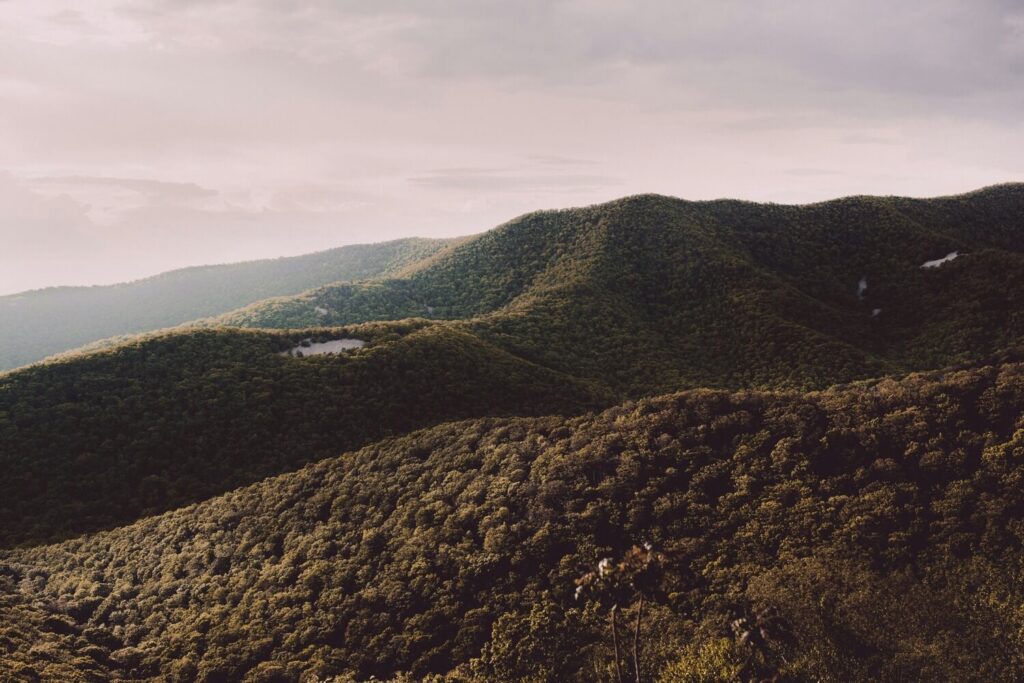
Shenandoah comes alive in April. Just a quick 75-mile hop from DC, these Blue Ridge Mountains give you a perfect view of spring with wildflowers popping up everywhere and trees sporting their fresh new leaves.
The weather plays nice this time of year, with days in the 60s to 70s and nights dipping to the 40s. It’s just right for hitting the trails during the day and cozying up to a campfire at night.
The park starts opening its four campgrounds in April: Mathews Arm, Big Meadows, Lewis Mountain, and Loft Mountain. Big Meadows sits right in the middle of everything, making it super convenient for checking out the park’s best spots.
April visitors enjoy Shenandoah’s famous waterfalls at their fullest, fed by spring rains and winter snowmelt. Dark Hollow Falls, Rose River Falls, and Overall Run Falls are particularly impressive this time of year.
Skyline Drive, the scenic 105-mile road running the length of the park, offers stunning overlooks that become increasingly lush as April progresses. Keep your eyes peeled for black bears emerging from winter dormancy and the eastern part of the park bursting with dogwood and redbud blossoms.
4. Grand Canyon National Park, Arizona
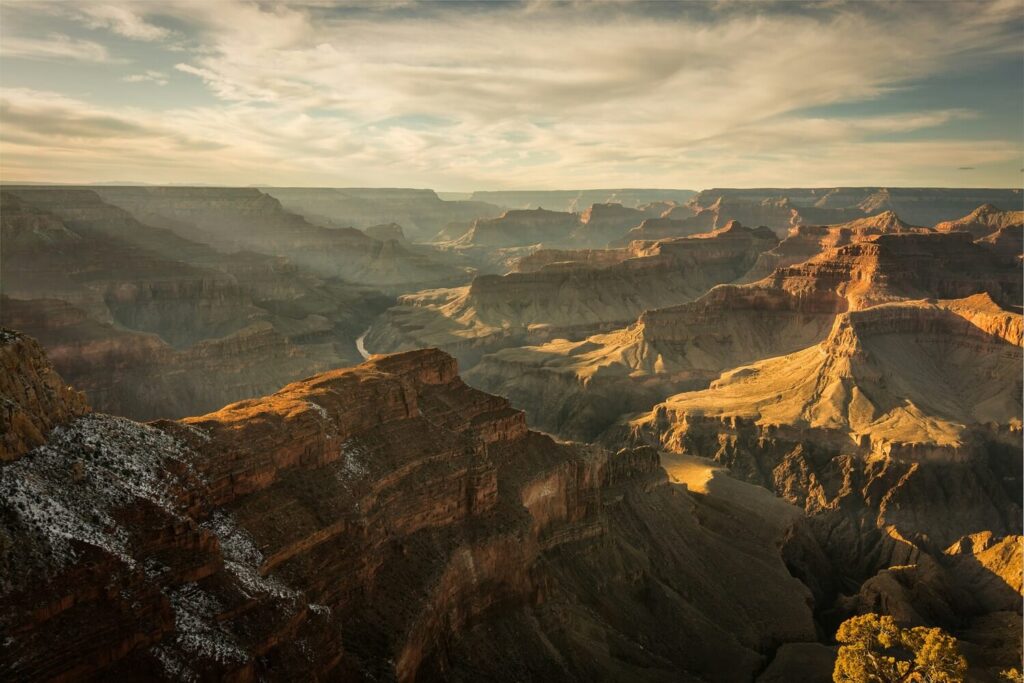
The Grand Canyon is way more pleasant in April than during those scorching summer months. You can actually enjoy the incredible views without melting or fighting through crowds at every lookout point.
Up on the rim, expect temps around 50-70°F during the day and down to the 30s at night. Just remember it gets much warmer if you hike down into the canyon (it’s like a whole different climate).
For the classic Grand Canyon camping experience, head to Mather Campground or Desert View Campground on the South Rim. Mather stays open all year, while Desert View typically opens its gates mid-April. The North Rim usually stays closed until mid-May, so save that for another trip.
April brings vibrant wildflowers to the canyon edges and increased wildlife activity. The Bright Angel and South Kaibab trails offer manageable day hiking options, though always remember that the journey back up requires twice the energy of the descent.
While April sees fewer visitors than summer months, the Grand Canyon remains popular year-round. Arrive early in the morning to secure first-come, first-served campsites, or make reservations well in advance through the National Park Service.
5. Sequoia and Kings Canyon National Parks, California

Sleeping under trees so massive they make you feel ant-sized is something everyone should experience. These neighboring parks are home to giant sequoias older than Christianity, with some trunks wider than your car is long.
April is that in-between season here. Lower spots warm up nicely to the 60s, while higher elevations might still be dealing with snow and freezing nights.
You’ll find 14 campgrounds scattered at different elevations throughout both parks. In April, stick to the lower spots like Potwisha, Buckeye Flat, and Azalea, which are usually open and ready for campers. The higher campgrounds typically stay snowed in until late May or June.
Spring brings rushing waterfalls, blooming dogwoods, and smaller crowds than the summer high season. The famous General Sherman Tree (the world’s largest tree by volume) and Congress Trail are typically accessible, though some higher-elevation roads and trails may remain snow-covered.
Wildlife becomes increasingly active in April, with black bears emerging from hibernation and mule deer visible throughout the parks. The sequoia groves themselves, with their enormous ruddy trunks reaching skyward, create an almost cathedral-like atmosphere for campers seeking natural majesty.
6. Hammocks Beach State Park, North Carolina
If you want beach camping minus the usual tourist scene, Hammocks Beach State Park hits the spot. Bear Island (only reachable by ferry, private boat, or kayak) gives you that wild, unspoiled Atlantic beach experience that’s getting harder to find.
April weather here is pretty sweet, typically between 50-75°F. The ocean’s still on the chilly side (around 60°F), but the beaches are perfect for collecting shells, fishing, or just watching dolphins and shore birds do their thing.
The camping setup is back-to-basics: 14 family sites and three group spots with zero electricity or running water. You get pit toilets and that’s about it. Pack in everything you need, including all your drinking water. This is true beach camping without the frills.
What makes April special at Hammocks Beach is the solitude. Before the summer rush begins, you might have stretches of shoreline entirely to yourself. Loggerhead sea turtles begin nesting in late April, and shorebirds are abundant as they migrate along the Atlantic flyway.
The mainland portion of the park offers a visitor center, exhibit hall, and paddling trails through coastal marshes, perfect for exploring the rich estuarine ecosystem by kayak or canoe.
7. Bahia Honda State Park, Florida
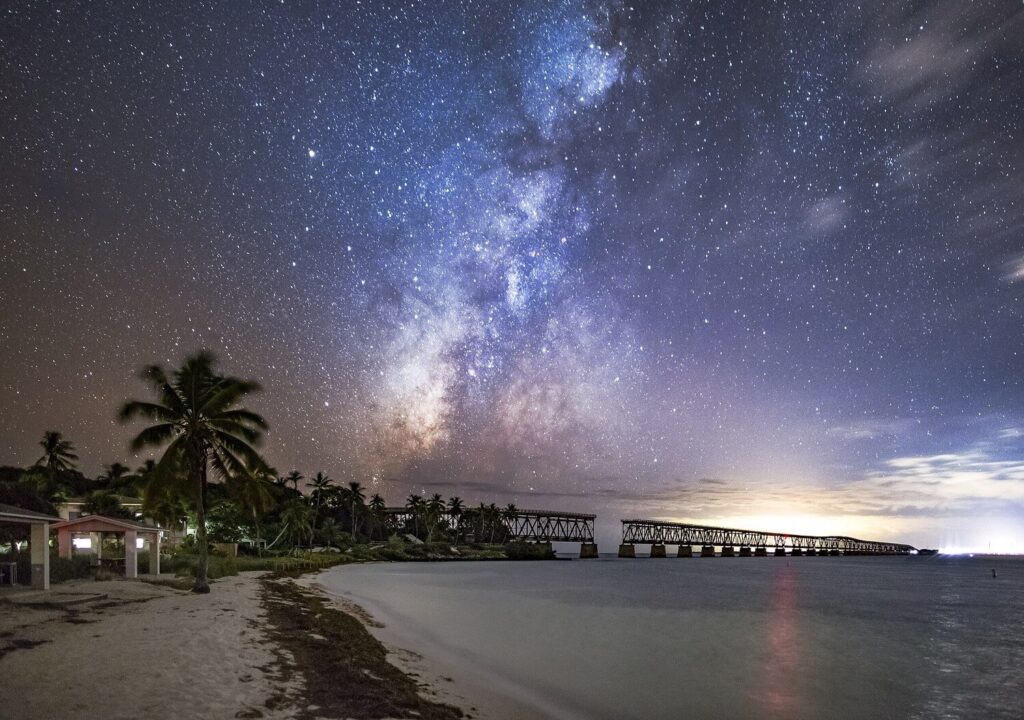
Bahia Honda lets you camp in the Florida Keys without emptying your wallet. Picture palm trees over your tent and that gorgeous emerald-green water just steps away. It’s basically a beach resort experience for campground prices.
April is hard to beat weather-wise: high 70s to low 80s, humidity taking a break, and rain deciding to show up somewhere else. It’s pretty much perfect for beach days and water fun.
You’ve got three camping options here: Buttonwood (good for RVs with hookups), Bayside (more rustic but right on the water), and Sandspur. Recently Sandspur has been in recovery mode from hurricane damage, so double-check if it’s available before getting your heart set on it.
The real treasure of Bahia Honda lies in its waters. The park boasts some of the best snorkeling in the continental United States, with incredible visibility and abundant marine life. The offshore Looe Key National Marine Sanctuary offers spectacular reef snorkeling and diving through park-concessioned boat trips.
From your campsite, watch spectacular sunrises and sunsets over the water, spot dolphins playing offshore, or simply relax in the gentle tropical breeze. April’s typically calm weather makes this an especially peaceful time to visit.
8. Kalaloch, Olympic National Park, Washington
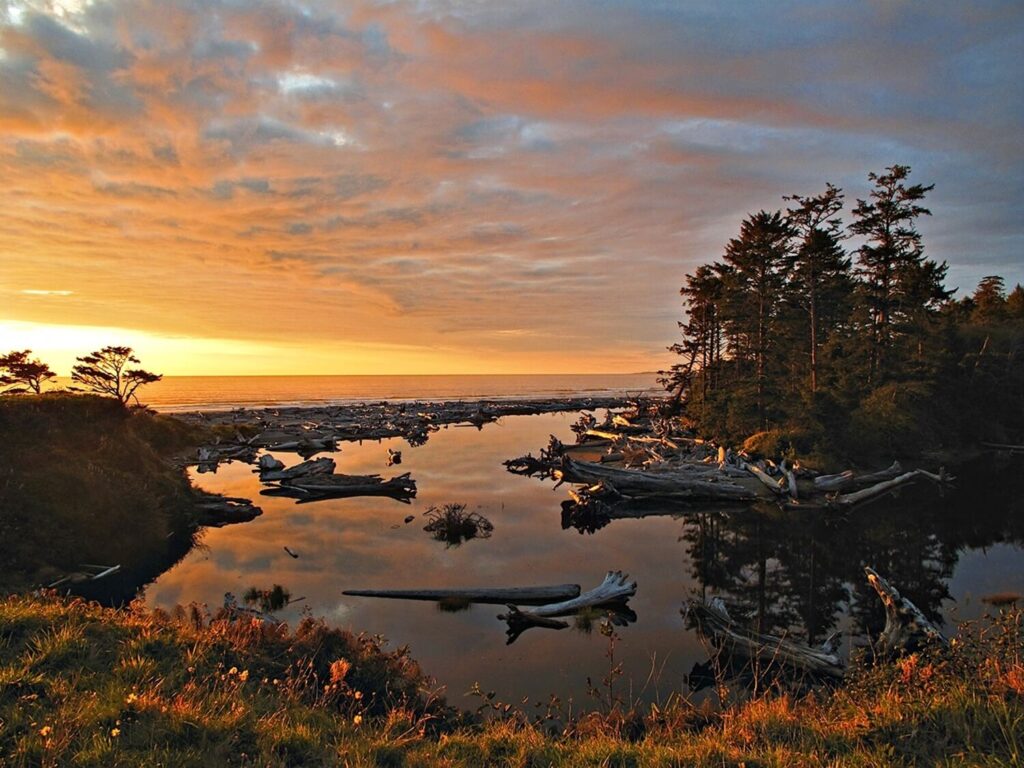
Kalaloch (say it “clay-lock”) is where rainforest meets ocean in the most dramatic way possible. This gem on Olympic National Park’s southern coast has everything you want from the Pacific Northwest: massive sea stacks, tide pools full of weird and wonderful creatures, and sunsets that make you question moving back to the city.
April shows the first signs of spring, though temperatures hang out in the 40s to upper 50s. Rain is still part of the deal, just less than winter. Definitely pack that rain jacket and some warm layers.
The campground sits right on a bluff with the ocean spread out below. There are 170 sites, and some lucky campers get direct ocean views. Most spots are tucked among pine and spruce trees, which help block those gusty coastal winds. April is when reservations become pretty much essential, so plan ahead.
What makes Kalaloch special in April is the marine sanctuary protection that creates extraordinary wildlife viewing opportunities. Gray whales pass by during their northern migration, bald eagles soar overhead, and tide pools reveal fascinating intertidal creatures during low tide.
Don’t miss the famous “Tree of Life,” a Sitka spruce that somehow survives despite having its roots exposed by erosion, creating a natural bridge over a hollow in the cliff face. Beach 4’s tide pools and Ruby Beach’s photogenic sea stacks are also must-see attractions within easy driving distance of the campground.
9. White Mountains National Forest, New Hampshire
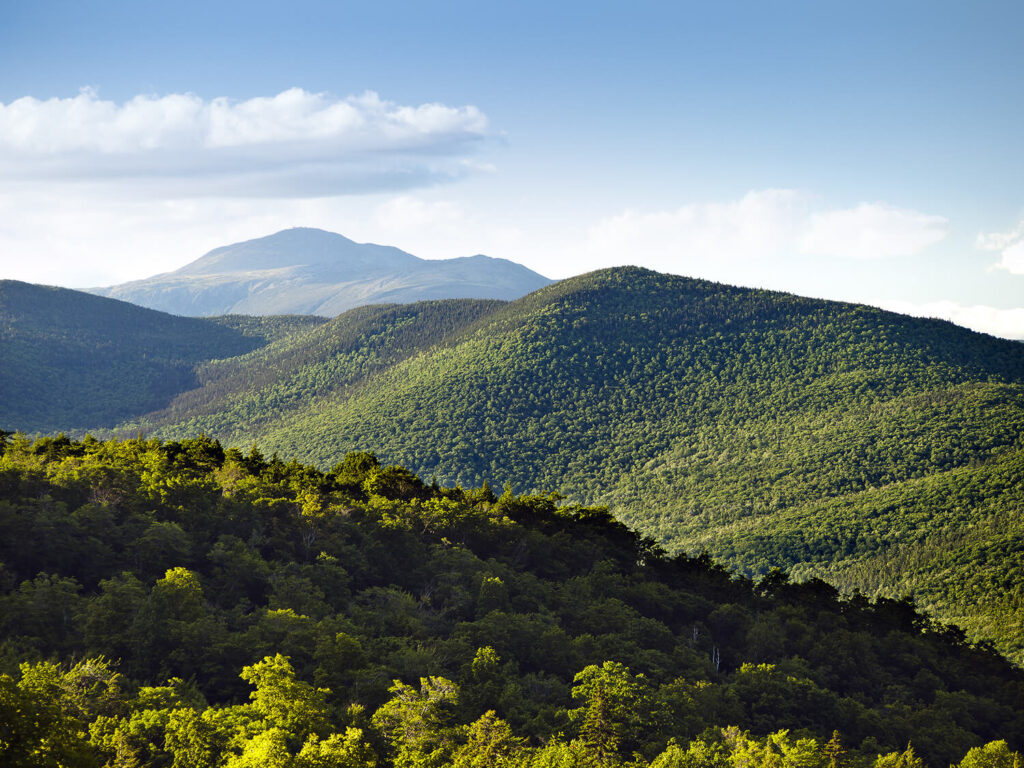
Winter doesn’t give up easily in New England, but by April, the White Mountains start showing signs of life. Camp here now and you’ll catch that perfect in-between season, where snowy mountaintops will have signs of spring creeping up through the valleys.
The weather’s all over the place. Valley areas might warm up to the 60s while higher spots stay pretty chilly. Night temps usually sink into the 30s, so don’t pack away that warm sleeping bag just yet.
April campers should stick to lower spots like Barnes Field and Hancock, which usually open their gates around this time. Most of the higher campgrounds stay closed until May or June. If you’re into roughing it, some roadside sites might be accessible for a more basic camping experience.
This time of year brings rushing streams and waterfalls as snowmelt courses down the mountains. Early spring wildflowers like trout lily and spring beauty emerge along forest floors in sunny spots, while hikers can experience the unique transition from spring conditions at lower elevations to lingering winter higher up.
Wildlife activity increases significantly as bears emerge from hibernation and moose become more visible feeding on fresh vegetation. For those seeking solitude among remarkable mountain scenery, April in the White Mountains offers quiet trails and peaceful campsites before the summer hiking season begins.
10. Ozark-St. Francis National Forests, Arkansas
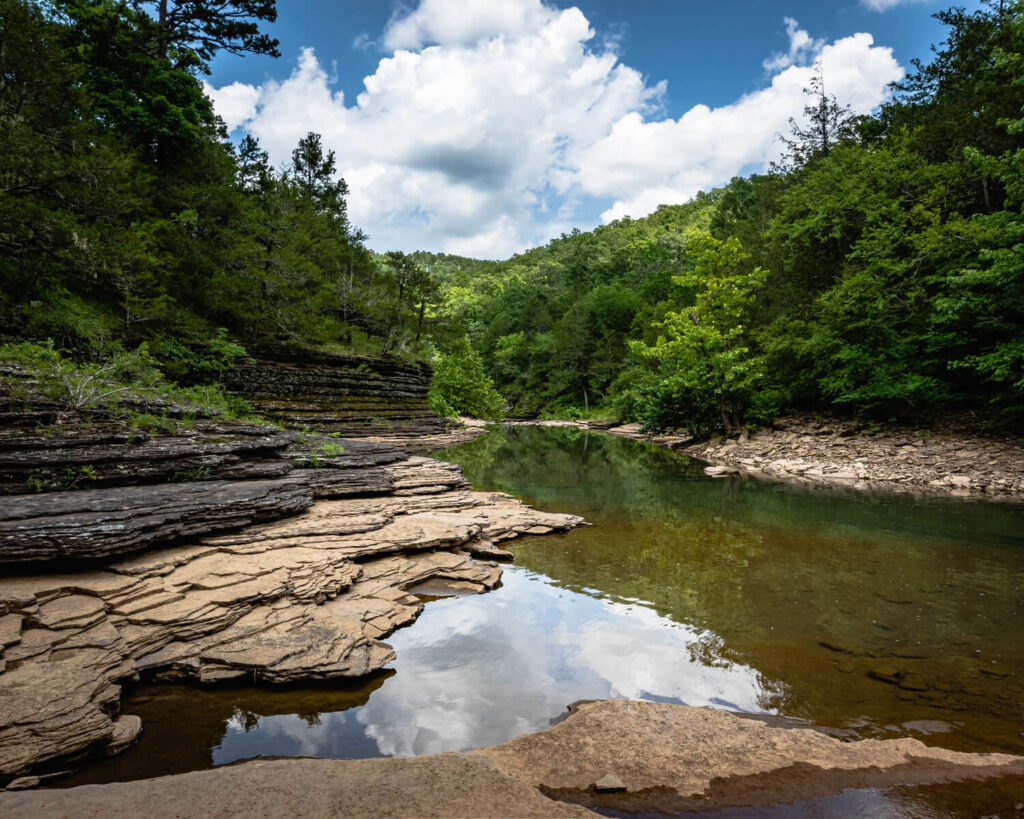
People tend to skip past Arkansas for the big-name parks, but the Ozark-St. Francis National Forests are seriously underrated. This massive 1.2-million-acre playground of rolling hills, crystal-clear streams, and hardwood forests really shows off in spring.
April weather in the Ozarks is just about perfect with it being in the 40s at night and 70s during the day. The spring rain does its job, turning everything green and triggering wildflower explosions throughout the forest.
You’ve got several year-round campgrounds to pick from, including Cove Lake, Redding, and Blanchard Springs. These range from basic spots with tent pads to full setups with RV hookups. Want more solitude? The forest allows dispersed camping in many areas, so you can find your own private corner of the woods.
What makes April special in the Ozarks is the explosion of color as dogwoods, redbuds, and wildflowers bloom throughout the forests. Waterfalls reach peak flow with spring rains, making this the perfect time to visit spectacular cascades like Falling Water Falls, Richland Falls, and the multilevel High Bank Twin Falls.
The clear, cool streams provide excellent fishing for smallmouth bass and trout, while more than 400 miles of hiking trails showcase everything from mountain vistas to natural stone bridges and blue-green swimming holes.
11. Enchanted Rock State Natural Area, Texas

This giant pink granite dome sticks out from the Texas Hill Country like nature’s version of a theme park. Enchanted Rock (basically a massive chunk of underground rock that got exposed by erosion) is surrounded by amazing wildflowers in April. Fields of bluebonnets and Indian paintbrush make even non-photographers want to snap pictures.
Spring weather here is hard to beat: 70s to low 80s during the day, cooling off to the 50s at night. It’s just right for scrambling around on rocks and hitting the trails.
Camping is pretty basic but in a good way. The walk-in sites are about 100 yards from where you park, and each comes with the camping essentials: picnic table, fire ring, and tent pad. There are only 35 sites total, so definitely book ahead, especially for spring weekends when half of Texas seems to show up.
April transforms the surrounding Hill Country with spectacular wildflower displays. Bluebonnets, Indian paintbrush, Mexican hat, and dozens of other species create colorful carpets across the landscape. The moderate temperatures make this the perfect time to hike to the summit of Enchanted Rock for panoramic views of the surrounding countryside.
The park’s remote location and minimal light pollution create extraordinary stargazing opportunities. In April, the Lyrid meteor shower often provides an additional celestial display for nighttime sky watchers.
12. Na Pali Coast, Kauai, Hawaii
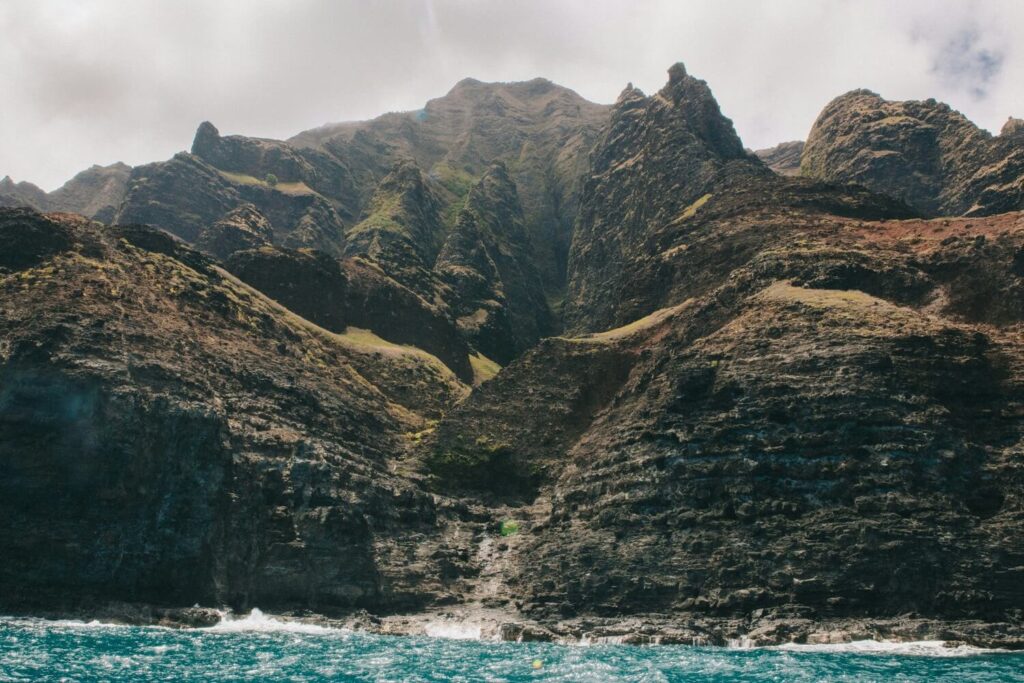
If you’re looking to level up your camping game, the Na Pali Coast should be on your bucket list. This stretch of Kauai’s coastline looks like something from a movie set with its massive sea cliffs, hidden valleys, and beaches you can only reach on foot.
April hits the sweet spot in Hawaii’s dry season. Days hover around 80°F, nights cool down to about 65°F, and the winter rains mostly take a break (though you might still get the occasional quick shower, it is a tropical rainforest, after all).
Getting to the best camping spot at Kalalau Beach is an adventure in itself. The 11-mile Kalalau Trail isn’t for beginners. It’s steep, sometimes slippery, and crosses several streams. But man, is it worth it. Sleeping on a remote beach under 4,000-foot cliffs with no cell service, roads, or other signs of the modern world is the definition of getting away from it all.
For less adventurous visitors, Hanakoa Campground sits 6 miles into the trail, offering a shorter but still challenging option. Na Pali Coast State Park strictly limits permits, which become available 90 days in advance and sell out quickly.
April visitors enjoy more stable trail conditions than winter months, when heavy rains can create dangerous stream crossings and slippery paths. The drier conditions also enhance the breathtaking views of emerald cliffs dropping directly into the azure Pacific Ocean.
13. Split Rock Lighthouse State Park, Minnesota
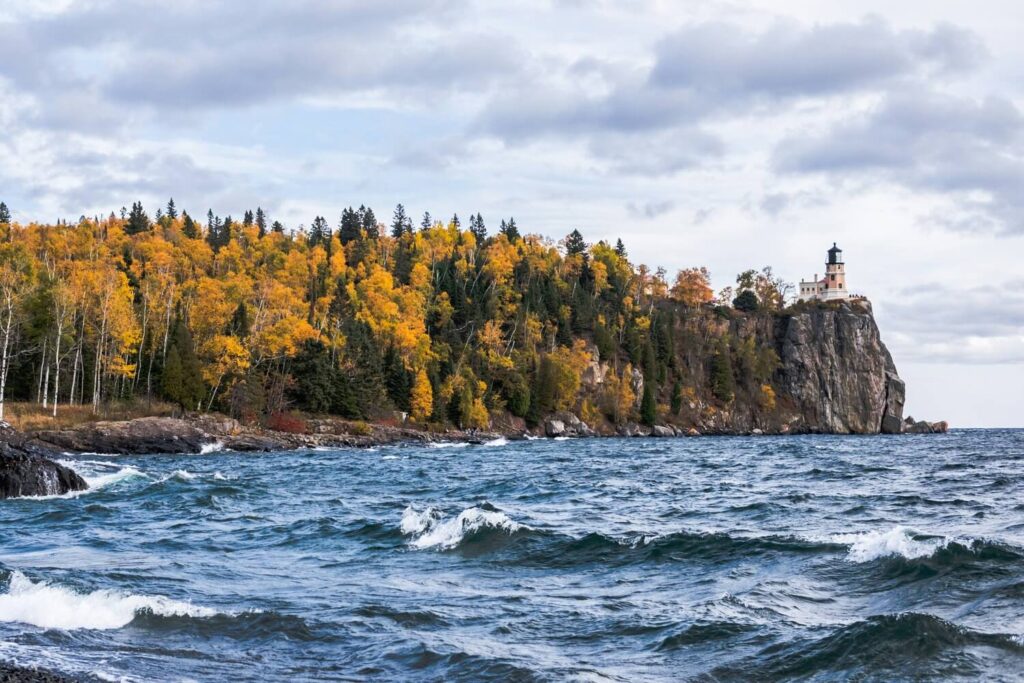
The North Shore of Lake Superior has this perfect combo of rugged coastline meets northern forest, and Split Rock Lighthouse State Park is its crown jewel. That iconic lighthouse standing on the cliff has probably shown up in half the Minnesota calendars ever made.
April is that transition time when winter starts loosening its grip. Expect temperatures bouncing between the 30s and 50s. Lake Superior acts like a giant temperature regulator, keeping things from getting too extreme. Layer up and bring rain gear just in case.
The camping setup here is a bit different. Instead of driving right to your site, you load your gear onto wheeled carts and roll it a short distance from the parking area. It’s worth the little extra effort though, as these “cart-in” sites give you way more privacy and better views than typical campgrounds. The campground usually opens around mid-April, assuming winter doesn’t decide to hang around longer.
Early spring brings particular magic to this northern landscape. The famous lighthouse stands in stark relief against the still-pristine surroundings, while snowmelt feeds numerous cascades tumbling toward the lake. Ice formations may still cling to shoreline rocks, creating ephemeral sculptures that disappear as April progresses.
Hiking trails wind along the rocky shoreline and through emerging spring forests. Keep watch for returning migratory birds, including loons, whose haunting calls echo across the water. For a special experience, time your visit with a full moon to witness its reflection creating a shimmering path across the vast lake.
14. Carl G. Washburne State Park, Oregon
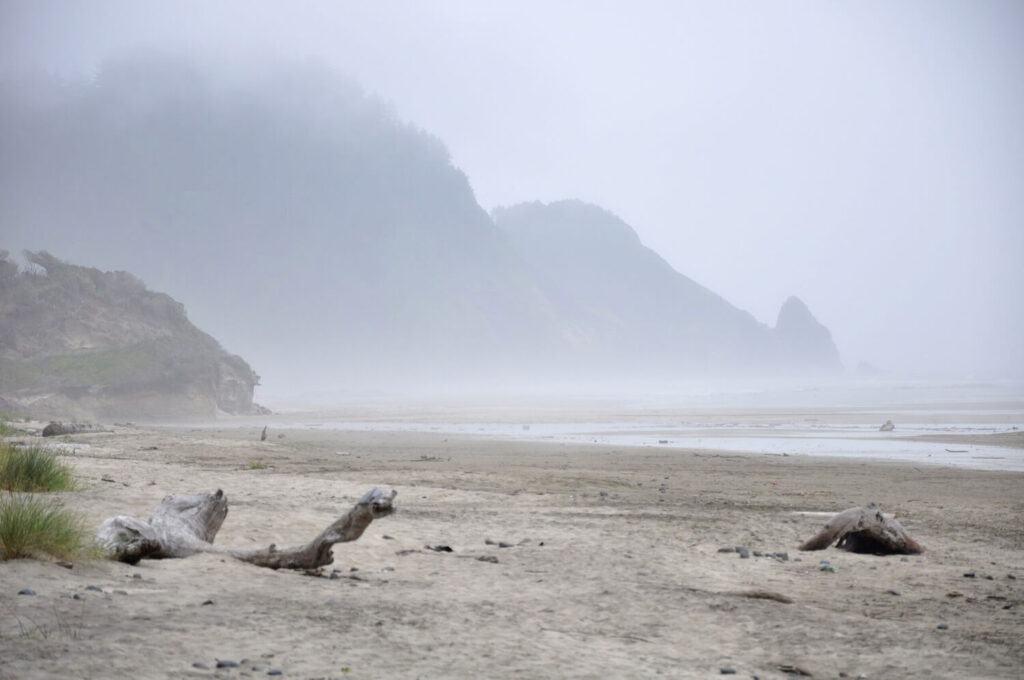
Sandwiched between the crashing Pacific waves and thick coastal forest, Carl G. Washburne gives you that classic Oregon coast vibe without the crowds you’ll find at better-known spots.
April weather on the Oregon coast is, well, very Oregon: temperatures bouncing between the 40s and upper 50s with a good chance of rain. But you’ll also get those magical moments when the sun breaks through and turns the ocean into a sparkly light show.
The campground has 58 sites that work for both tents and RVs, with 38 of them featuring electrical hookups. For a more secluded experience, snag one of the five walk-in tent sites tucked among towering pines and spruce. Not feeling the tent thing with Oregon’s unpredictable weather? They’ve got yurts too, which make rainy nights a lot more pleasant.
What makes April special at Washburne is the combination of wildlife viewing opportunities and natural beauty. Gray whales pass close to shore during their northern migration, easily spotted from the beach or nearby Heceta Head Lighthouse. Harbor seals haul out on offshore rocks, while tidepools reveal fascinating marine creatures.
The park connects to a network of trails, including the China Creek Loop through old-growth coastal forest and access to the Oregon Coast Trail for longer hikes. Across Highway 101, the Valley Trail leads to spectacular views from Heceta Head Lighthouse, one of the most photographed lighthouses in America.
15. Custer State Park, South Dakota
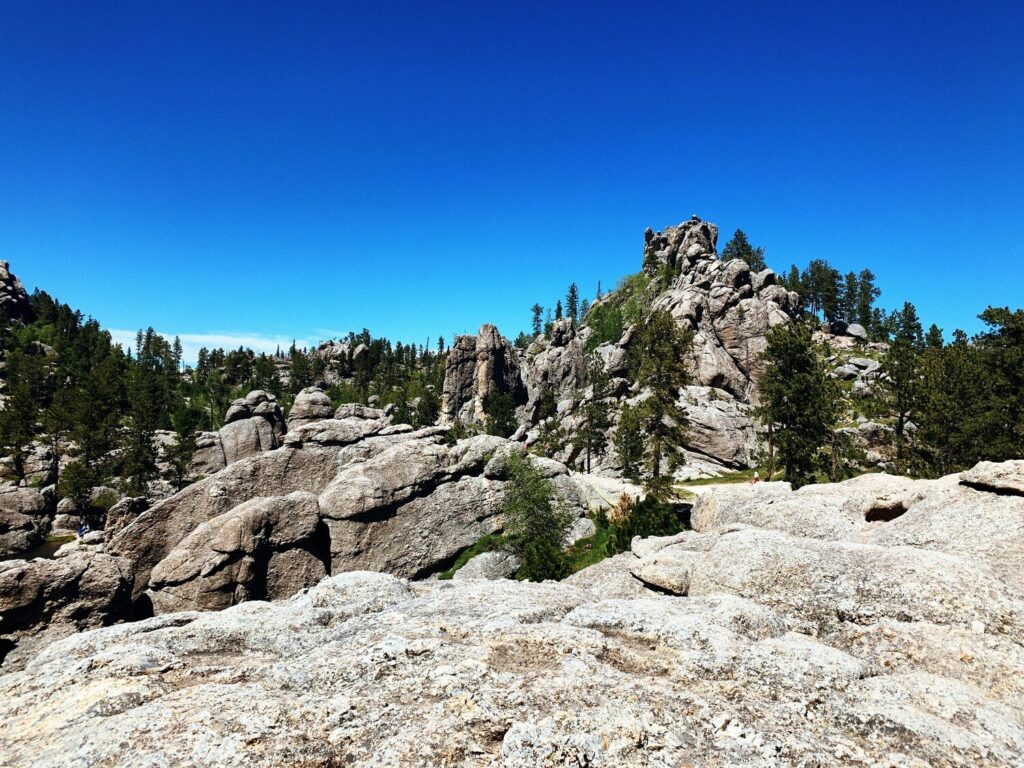
Sprawled across 71,000 acres of the Black Hills, Custer State Park is basically wildlife central for the eastern half of the country. Think Yellowstone without the crowds. The mix of open prairie, forest patches, and weird granite rock formations creates perfect homes for all kinds of animals.
April in the Black Hills means temps in the 30s at night, warming up to the 50s or 60s during the day. The weather can flip from sunny to snowy faster than you can say “South Dakota,” so pack for anything.
As for camping, you’ve got plenty of options. Blue Bell and Center Lake campgrounds usually open around mid-April, depending on how stubborn winter decides to be. These spots are peaceful, tucked among tall ponderosa pines, and work well for both tent camping and RVs.
Spring breathes new life into the park, with prairie grasses greening, wildflowers beginning to emerge, and wildlife becoming increasingly active. The famous bison herd, nearly 1,400 strong, becomes more visible as calving season approaches, with red-orange calves appearing from late April into May.
Other wildlife viewing opportunities abound, with pronghorn, elk, deer, bighorn sheep, mountain goats, and the charismatic “begging burros” active throughout the park. April visitors enjoy all this with significantly smaller crowds than the summer months bring to this popular destination.
For a spectacular scenic drive, take the Needles Highway as it winds through granite spires and tunnels carved through solid rock. The Wildlife Loop Road offers the best opportunities for animal sightings, particularly during early morning or evening hours.





